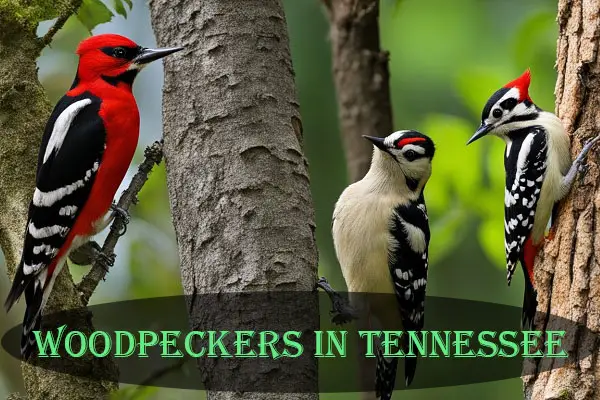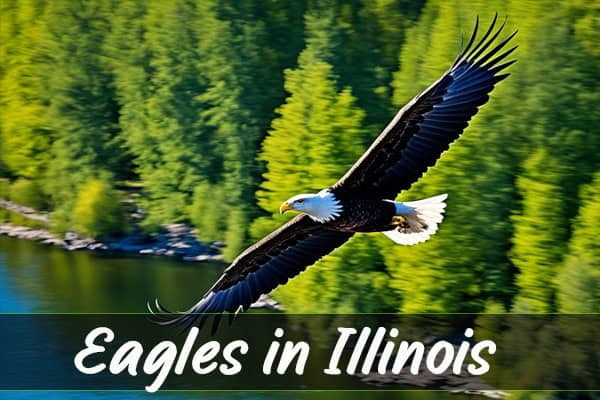Discover Blackbirds (Icteridae): Colorful Songbirds
Do you love seeing colorful birds in your yard and listening to their songs? You’re going to enjoy learning about blackbirds (Icteridae) from the Americas. These birds are known for their beautiful colors and how they sing together. It’s exciting to watch them.
Blackbirds come in many varieties, all with special looks and behaviors. This guide is for anyone interested in birds, whether you’re new or experienced. Together, let’s explore the world of blackbirds Icterida in our own backyards and beyond.
Here We’ll learn about Blackbirds (Icteridae)
Introduction to Blackbirds (Icteridae)
The Icteridae family is full of color and song. This group includes orioles, caciques, and grackles. You can find these birds from Alaska to the tip of South America. In total, there are about 100 species of these amazing birds.
Overview of the Icteridae Family
Studies show the Icteridae family has five main branches. These branches represent different stages of their history and where they live. They range in size from 6 to 21 inches, with males often being brighter in color. The females are usually smaller and not as colorful.

Geographical Distribution and Diversity
These blackbirds are exclusive to the Americas. They can be found in various places like North and South America and even the Caribbean. Species like the Baltimore Oriole and the Red-winged Blackbird are loved across the continent.
“The Icteridae family represents one of the most fascinating and diverse groups of songbirds in the Americas, with a rich evolutionary history and a wide range of adaptations to various habitats.”
Physical Characteristics
The blackbird family Icteridae is very diverse. It varies a lot in size, shape, and colors. You can find the tiny orchard oriole, just 0.6 oz (16 g), to the big Montezuma’s oropendola at 1.2 lb (528 g). These birds show a broad range of sizes and shapes. Plus, they wear beautiful plumage, often with black, yellow, and red.
One special thing about Icteridae is the big difference in looks between males and females. Males look bright and interesting, while females are usually more subdued. This difference helps them live in different places throughout the Americas.
Size and Shape Variations
The Icteridae family has a big variety in size. For example, the orchard oriole is small at 6.7 inches (17 cm) and 0.6 oz (16 g). In contrast, the Montezuma’s oropendola is large, reaching 21.5 inches (55 cm) and 1.2 lb (528 g). This shows how different they can be in size and shape.
Colorful Plumage and Sexual Dimorphism
Icterids are famous for their bright and beautiful plumage. They have feathers in black, yellow, and red that really stand out. What’s interesting is the big difference between males and females in color. Males usually have much brighter colors than females.
| Characteristic | Range |
|---|---|
| Length | 6.7–21.5 in (17–55 cm) |
| Weight | 0.6 oz–1.2 lb (16–528 g) |
| Number of Genera | 25 |
| Number of Species | 103 |
Habitats and Behavior
Blackbirds come from a large family called Icteridae. They are songbirds found all over North America. You can see them in forests, wetlands, grasslands, and even in cities. This shows their ability to live in many places. We will learn about where blackbirds live and how they act.
Nesting and Foraging Habits
Blackbirds are very skillful in how they build their homes and find food. Birds like the Red-winged and Brewer’s Blackbirds make their nests in thick shrubs or trees. The nests are detailed cups. Tricolored Blackbirds nest together in big groups.
For food, blackbirds eat almost anything. They look for insects, seeds, or fruits wherever they are. This ability helps them survive in different places and find food easily.
The Brewer’s Blackbird does very well in places changed by people, like farms and cities. They find a lot of food there. This skill has let them grow in numbers in some areas.
“Blackbirds are true masters of their domain, seamlessly integrating into a variety of habitats and showcasing their remarkable foraging abilities.”
Blackbirds can live in many places and find food in many ways. Their ability to adapt and survive is amazing. Studying where they live and how they live helps us see their great skills.
Blackbirds (Icteridae) in North America
In North America, blackbirds are a diverse and colorful family known as Icteridae. They live in many places, from the northern forests to the southern subtropical zones. While some, like the rusty blackbird, live in the north, others like the Tricolored Blackbird and Red-winged Blackbird are everywhere.
The many blackbird species in North America show their ability to live in different places. They can be found in wetlands, grasslands, cities, and farms. This icterid distribution in North America shows how adaptable these birds are.
| Blackbird Species | Primary Distribution in North America |
|---|---|
| Red-winged Blackbird | Widespread across North America |
| Brewer’s Blackbird | Central and western North America |
| Yellow-headed Blackbird | Central and western North America |
| Tricolored Blackbird | Western coast of the United States and Baja California, Mexico |
| Rusty Blackbird | Eastern North America |
The many blackbirds in North America have drawn interest from scientists. They have studied the behavior and ecology of these birds. This helps us understand their part in nature. However, some, like the Red-winged Blackbird, can cause problems for farms. This has led to efforts to protect crops.
The icterid distribution in North America highlights the strong and adaptable nature of these birds. They are a source of fascination for many, including scientists and bird lovers.

Flocking and Migration Patterns
Blackbirds belong to a family of songbirds called the Icteridae. They are famous for their amazing flocking. During migration and when they aren’t breeding, they gather in huge flocks. These flocks can even have millions of birds. People are awestruck by the beautiful, swirling shapes these flocks create, known as blackbird murmurations.
Flocking brings benefits like better defense against predators and shelter from harsh weather. These perks have spurred the evolution of stunning flocking behaviors in blackbirds. The Red-winged Blackbird holds the world record. About 40 million of them were spotted during a Christmas Bird Count in Arkansas in December 1964.
Impressive Murmurations
Blackbird murmurations are truly stunning. For example, in the Columbia Audubon Society’s six-county area in Missouri, approximately 10 million “blackbird sp.” were seen at dusk on January 5, 2019. This event occurred in Audrain County and set a record as the highest count of a single type of bird in the state.
These large gatherings often include various blackbird species, like Common Grackles and Red-winged Blackbirds, and also European Starlings. For instance, a flock with 5 million birds was spotted during a Christmas Bird Count at Eagle Bluffs. This was on December 17, 2011, with 75% Common Grackles, 20% Red-winged Blackbirds, and 5% European Starlings.
The best times to see these blackbird flocks in central Missouri range from the late fall to winter. Smaller flocks can be seen in spring and summer when they breed. They often gather at roosting sites near dusk or dawn. This gives bird watchers and nature lovers an incredible chance to see these breathtaking natural spectacles.
Although there has been a lot of research on blackbird migrations and flocking, there’s still plenty to uncover. These studies teach us about the intricate behaviors and adaptations that help these birds thrive in many habitats across North America.
Blackbird Species Spotlight
North America is home to many bird species, including the Tricolored Blackbird and the Red-winged Blackbird. Nature lovers are fascinated by these birds because of their colorful feathers and interesting habits.
Tricolored Blackbird
The Tricolored Blackbird stands out because of its red shoulder patch and white feathers that frame it. They usually live in big groups. These birds are mainly found in the Central Valley and coastal California. Sadly, their numbers have been dropping in recent years.
Red-winged Blackbird
The Red-winged Blackbird is a common sight in North America, known for its flashy red and yellow shoulder patches. It lives in wetlands and fields and often flies with other blackbirds. Even though they are found in large numbers, their populations are decreasing. This is a cause for concern for their future.
The Tricolored Blackbird and the Red-winged Blackbird are part of the diverse Icteridae family. They are important because they add to the variety of blackbird species in North America. Knowing about these birds helps us understand the blackbirds’ crucial role in the ecosystem.

Conservation Status
Many blackbird species are doing well across the globe. But, some are in trouble. The Icteridae family has 3 critically endangered, 4 endangered, and 4 vulnerable species. These numbers come from the IUCN Red List. Things like losing their homes, farming, and other human actions are hurting these birds.
For example, the tricolored blackbird (Agelaius tricolor) is endangered. There are only about thirty-five thousand of these birds left. Their numbers began falling fast in the 1980s. Sadly, this is mainly because of losing places to live, thanks to cities and farms.
But, there’s light at the end of the tunnel. The U.S. Fish and Wildlife Service figured out some big ways to help the tricolored blackbird in 2007. Fast forward to 2018, and California made sure to protect them more. Despite drops in some places, more were found in the San Joaquin Valley.
Even though the tricolored blackbird’s numbers have shrunk a lot in the last century, efforts to save them are working. Places like Riverside County are seeing more of these birds. Thanks to groups like the National Audubon Society, these birds are doing better.
The red-winged blackbird (Agelaius phoeniceus) is one of the more common types. They number over 300 million in North America by late summer. But, some blackbirds can hurt crops. Birds like brown-headed cowbirds and others can damage crops and spread diseases.
Some blackbirds Icteridae are doing fine, while others need our help. It’s important to save their homes, deal with farming issues, and keep an eye on how many are out there. This is critical for these birds’ future.
Blackbirds in Culture and Folklore
Blackbirds are more than just birds. They stand out with bright colors, unique flock behavior, and sweet songs. For ages, they’ve been a key part of human stories and beliefs in the Americas. These birds shine as symbols of our shared history.
In some beliefs, seeing a blackbird means good luck is coming. They might also warn about big changes ahead. Blackbirds show the power of adapting to harsh environments. This makes them symbols of strength and the ability to change.
In other stories, blackbirds are linked with darker ideas. They can be seen as playing tricks, causing trouble, or even bringing death. Their dark feathers feed into tales of the mysterious and supernatural.
But it’s not all spooky. Blackbird songs have inspired art and literature. Some cultures think the songs have special, maybe magical, meaning. They might even predict the future.
“Sing a song of sixpence, a pocket full of rye. Four and twenty blackbirds baked in a pie.”
A classic nursery rhyme talks about blackbirds in a pie. It’s not just a cute story. It shows blackbirds’ deep connection to human culture and stories over the years.
Whether they bring luck, mischief, or inspiration, blackbirds have a big role in our stories. Their presence highlights the wide range of beliefs and traditions we have. They show how much we’ve always loved and admired nature.
Read Our Previous Articles:
Viewing and Identifying Blackbirds
Finding and naming blackbirds can be a fun activity for those who love birds. Their beautiful songs bring joy to many. Often, these birds fly in big groups, making a spectacle in the sky.
By learning about their unique looks, sounds, and ways, bird lovers can enjoy their presence even more.
Tips for Birders
Ready for a blackbird adventure? Here are some tips:
- Know the blackbird types in your area like the Red-winged, Rusty, and Brewer’s Blackbirds. Recognize their looks, songs, and habits.
- Look at their size, shape, and colors to tell them apart. Male blackbirds are shiny black, while females and young ones are brownish.
- Watch how they eat and move in groups. For example, Brewer’s Blackbirds might be on the ground, while Red-winged Blackbirds perch high.
- Listen for their unique sounds. These can be whistles or clicks. These sounds can help in finding and identifying them.
- Join projects like eBird to share your blackbird finds. This data helps scientists learn more about them.
With these tips, you’ll get better at spotting and knowing blackbirds from the Icteridae family.
| Blackbird Species | Distinguishing Features | Habitat and Range |
|---|---|---|
| Red-winged Blackbird | Glossy black body with bright red and yellow shoulder patches | Found across North America, particularly in wetlands, marshes, and agricultural areas |
| Rusty Blackbird | Dark body with rusty-brown feather edges, especially in winter plumage | Breeds in boreal forests and winters in swamps and wetlands of the eastern United States |
| Brewer’s Blackbird | Glossy black body with pale yellow eyes and a slender, pointed bill | Common in the western United States, found in open habitats like fields, pastures, and urban areas |
Enjoy blackbird watching not just for naming the birds, but for their unique lives. Knowing about them makes birdwatching more enriching.
Plus, it helps in appreciating their important roles in nature.
Agricultural Impact
Blackbirds, known for their bright colors and beautiful songs, bring both joy and trouble. They, along with the invasive European starlings, damage a lot of crops. These crops include rice, corn, wheat, soybeans, sunflowers, and various fruits and grains.
It’s been found that about half of the damage to sunflowers by blackbirds happens in the first two weeks after the petals fall. They are a big group of birds in North America. Their crop and livestock harm is estimated to cost about $200 million every year.
The fight between blackbirds and farmers has led to efforts to control them. Some of these efforts involve ending the birds’ lives. But, because of laws like the Migratory Bird Treaty Act, killing blackbirds without permission is illegal.
The U.S. is working on a plan to better manage the issue of blackbirds harming crops. The USDA’s WS works to solve these kinds of animal problems. They use methods like the Sonic Net. This device makes sounds that scare birds away, which can help save crops
But, figuring out how to deal with the issue isn’t easy. Farmers, those who love nature, and others have different views. As we try to solve this, we need to keep in mind the environment, the economy, and the value of these birds to our culture.
“Blackbirds are the single largest bird population in North America, and an estimated cautious damage of $200 million dollars annually is attributed to their impacts on crops and livestock.”
A final thought about Blackbirds (Icteridae)
Blackbirds, or Icteridae, are an enthralling and varied bunch of songbirds vital to the Americas’ ecosystems. Their bright colors, amazing flocking, significance, and challenges in conservation tell a story full of depth and interest.
Understanding and valuing blackbird diversity is key to their conservation. This helps ensure they stay in your yard and nearby areas. You might help by observing backyard birds, backing habitat protection, or supporting eco-friendly farming methods. These small steps could significantly impact these amazing birds.
Blackbirds aren’t just pretty; they also serve essential roles in nature. They help keep insect populations in check and spread seeds. Showing more love for these birds can aid in preserving them. It secures a future where they still soar and sing amid nature’s chorus.






